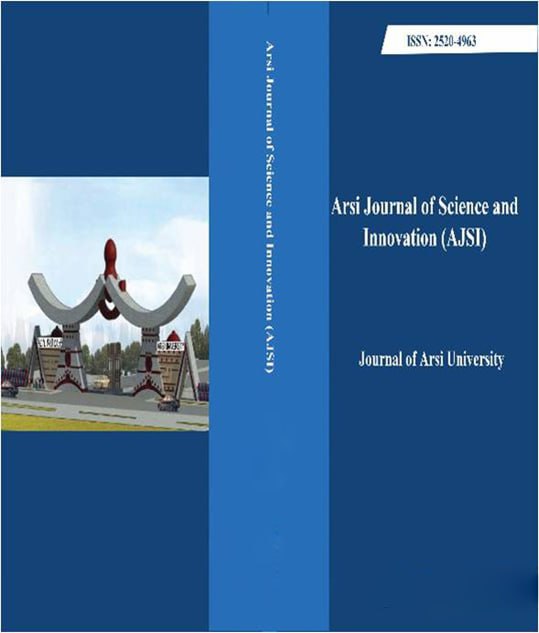Participatory Evaluation and Demonstration of Bagasse Ensiled with Wet Brewery Grain as Cattle Fattening Ration
DOI:
https://doi.org/10.20372/swd3-vz88Keywords:
Bagasse, Brewery grain, Enisling, Roughage, SupplementationAbstract
A farm participatory experiment was conducted to evaluate the effects of mixing and ensiling bagasse with wet brewery grain (WBG) and urea treatment of bagasses on chemical composition, nutrients utilization, shelf-life of WBG and economic feasibility as the fattening ration in peri-urban areas of East Shoa Zone. The evaluation was conducted on three different feeding treatments: bagasse ensiled with brewery grain and supplemented with concentrate mixed ration (CMR) (T1), bagasse treated with urea and supplemented with CMR (T2), and untreated bagasse supplemented with CMR (T3). The concentrate mixed ration was composed of 49.0% nouge cake meal and 50.0% wheat bran, and 1.00% mineral mix, and it was through mixed and uniformly milled using the feed mixer. Farmers were organized in to three groups each contributing one fattening ox and under each feeding option a total of 5 animals were used. Significantly higher percentages of ash (Ash), crude protein (CP) were recorded for brewery grain ensiled bagasse than the other two groups. The dry matter (DM), neutral detergent fiber (NDF) and acid detergent fiber (ADF) had decreased for brewery ensiled and urea treated than untreated bagasse while digestibility was enhanced for T1 and T2 than T3 with highest record in T1. Both T1 & T2 significantly (p < 0. 05) increased intake of bagasse and total dry matter and average daily weight gain. T1 was the most profitable, giving a net profit per animal of ETB 15,675, followed by T2 with the least for T3. In most livestock production systems fattening is one of the most profitable enterprises in Ethiopia, however, there was a large financial gain when the low quality feeds are improved with such techniques and supplemented with concentrate feeds. Ensiling brewery grain with bagasse can improve the nutritional quality of the basal diets and lowers the costs of fattening ration. The strategy demonstrated could be an alternative feed resource to tackle feed shortage if utilized by the Livestock and Fishery Development Sector.
Downloads
Published
Issue
Section
License
Copyright (c) 2024 Belete Shenkute Gemeda, Shimelis Regassa, Bekele Mechalu, Kidist Mersha (Author)

This work is licensed under a Creative Commons Attribution-NonCommercial 4.0 International License.
